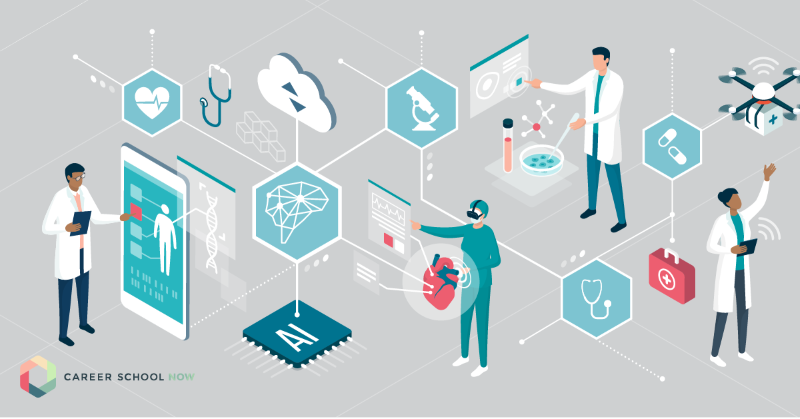Comprehending the Trick Duties and Duties in Medical Administration
Comprehending the Trick Duties and Duties in Medical Administration
Blog Article
Finest Practices in Medical Management for Improving Effectiveness and Lowering Expenses
In the ever-evolving landscape of medical care, the pursuit of ideal techniques in clinical administration is extremely important for boosting efficiency and curbing costs. By integrating advanced modern technologies such as electronic health documents and telemedicine, healthcare providers can improve operations and enhance client treatment. Nevertheless, modern technology alone is not a remedy; enhancing source allowance and promoting collaborative communication amongst treatment groups are just as essential (medical administration). As organizations strive to balance quality and expense, what strategies should be focused on to achieve these dual objectives? The solution to these concerns hold the secret to a more lasting healthcare system.
Leveraging Advanced Innovation
In today's swiftly progressing healthcare landscape, leveraging sophisticated technology is no more optional but essential for efficient clinical administration. The integration of electronic solutions right into health care systems has changed the means centers operate, streamlining processes and boosting person care. Electronic Wellness Records (EHRs) are pivotal, giving detailed client information that can be accessed instantly by licensed personnel, thus decreasing redundancy and lessening mistakes. By centralizing client details, EHRs remove the requirement for troublesome paperwork and facilitate smooth communication among health care companies.
Telemedicine is an additional technological improvement that has revolutionized person communication. It uses benefit for both clients and medical care experts by allowing remote consultations, which can reduce the requirement for in-person gos to and maximize consultation organizing. Additionally, telehealth systems can expand healthcare accessibility to country or underserved locations, connecting gaps in care distribution.
Moreover, making use of Expert system (AI) and device understanding is coming to be increasingly widespread in anticipating analytics, allowing for very early discovery of prospective health and wellness problems and more informed decision-making. These technologies, when integrated properly, can improve diagnostic accuracy and customize patient therapy plans, inevitably resulting in enhanced medical care results and functional efficiency.
Optimizing Source Allocation
Reliable resource allocation is vital for maximizing the efficiency of medical administration. By tactically taking care of sources such as personnel, devices, and financial resources, medical care centers can significantly enhance their operational performance, enhance individual end results, and lower unneeded expenses. The initial step in maximizing source appropriation involves conducting a comprehensive assessment of current properties and recognizing locations where sources might be underutilized or exhausted. This assessment should be data-driven, using metrics and analytics to educate decision-making procedures.
Focusing on resource allowance based on person requirements and solution demands is necessary. Executing versatile staffing versions can likewise optimize labor resources by readjusting personnel allocation in action to fluctuating client quantities.
Economic sources ought to be thoroughly monitored and alloted with strategic foresight to support both temporary functional demands and long-term institutional goals. This includes investing in training programs that boost team competencies and adopting energy-efficient methods that decrease operational expenses (medical administration). Eventually, a maximized resource allotment technique promotes a lasting health care atmosphere that is receptive, effective, and economically sensible
Streamlining Workflow Procedures
When healthcare centers aim to improve operational efficiency, streamlining workflow processes becomes a critical focus. Efficient operations decrease redundancy, remove unneeded steps, and enhance coordination amongst health care experts. This technique not only see this here accelerates solution delivery but also boosts the top quality of individual care.

Following, innovation assimilation plays a significant function in streamlining workflows. Applying electronic health and wellness documents (EHRs) and digital physician order entrance (CPOE) systems lowers paperwork, reduces human mistake, and ensures info comes to all relevant personnel. Furthermore, leveraging telemedicine systems can simplify patient assessments and follow-ups, lowering the pressure on physical infrastructure.

Eventually, streamlined workflows cause cost reductions and enhanced person complete satisfaction, fostering a more lasting health care atmosphere.
Enhancing Data Management
Structure upon structured process, enhancing data management becomes a vital part in progressing health care administration. Efficient data monitoring systems are crucial for maintaining exact individual records, improving decision-making, and making certain conformity with regulative standards. By applying durable data management services, medical care facilities can boost the high quality of patient treatment while all at once minimizing functional costs.
One secret element of enhancing data management is the integration of advanced browse around these guys electronic wellness record (EHR) systems. These systems help with the seamless exchange of person info throughout different divisions, minimizing duplication of tests and decreasing errors. A properly designed EHR system supports information analytics, enabling doctor to determine fads and make informed choices regarding individual care.
Furthermore, guarding patient information is extremely important. Adopting detailed cybersecurity measures, including file encryption and normal audits, guarantees the stability and privacy of delicate information. This not only secures people but likewise preserves the establishment's reputation.
Spending in team training is another vital aspect. Enlightening healthcare professionals on data administration methods improves their ability to successfully make use of innovation, leading to improved client results. To conclude, improving data monitoring through sophisticated modern technology and thorough training is necessary for attaining performance and price reduction in medical administration.
Fostering Collaborative Communication
A vital element ahead of time medical administration is fostering joint interaction among healthcare professionals. Efficient interaction is critical for making certain seamless client care, optimizing therapy results, and reducing mistakes. By encouraging open discussion and control across multidisciplinary teams, medical care companies can enhance their functional performance and minimize unnecessary prices.
Central to this approach is the assimilation of interaction modern technologies such as electronic health documents (EHRs) and protected messaging platforms, which promote the fast exchange of crucial person info. These tools make it possible for health care suppliers to access and share information in genuine time, ensuring that all employee are informed and straightened in their decision-making processes. In addition, routine group meetings and interdisciplinary rounds can better promote a society of collaboration and responsibility.
Training programs concentrated on boosting communication abilities are also necessary. These programs can help personnel create the ability to communicate information clearly and pay attention actively, hence minimizing misunderstandings and promoting an encouraging work atmosphere. Additionally, adopting standard interaction procedures, such as SBAR (Scenario, History, Assessment, Suggestion), can simplify the exchange of information, making sure that important details are conveyed succinctly and successfully. Inevitably, cultivating collaborative communication results in enhanced medical care distribution and expense financial savings (medical administration).

Verdict
Including innovative innovation, such as electronic wellness documents and telemedicine, together with optimized source appropriation and streamlined operations processes, is important for boosting effectiveness in medical administration. click for info Effective information management and cultivating joint interaction amongst health care teams are important for lessening redundancies and improving care quality. By prioritizing preventative treatment and engaging in quality improvement campaigns, health care organizations can attain considerable price savings and improved patient outcomes, consequently making sure sustainable healthcare shipment in a progressively complex environment.
Report this page